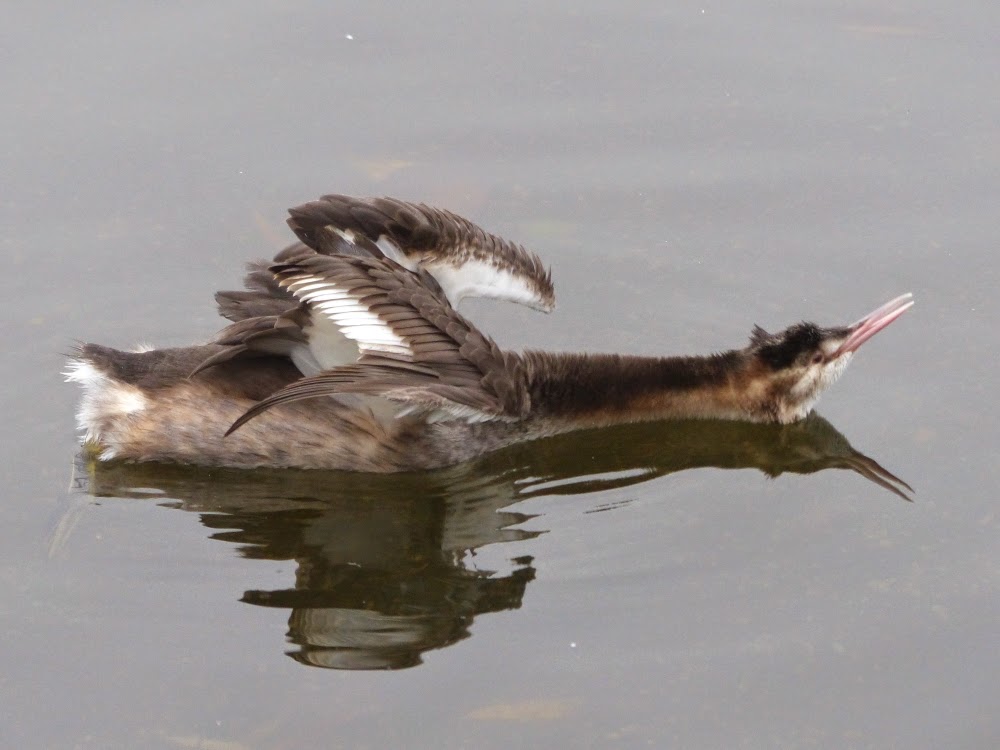The Egyptian Geese have begun their winter ritual of flying on to bare tree branches and displaying noisily to each other.
It is clearly a means of finding a tree to nest in, which is quite difficult for these large birds as it has to provide both easy access from the air and shelter. But the search is so prolonged that there must be a strong element of pair bonding through the fun of flying around and making a terrible racket. The female makes considerably more noise than the male.
The young blonde Egyptian, last seen at the Round Pond, was back on the Serpentine stretching her pale wings -- in a normal Egyptian Goose, the primaries are almost black.
I had always supposed that this bird was female, since all the other pale Egyptians without dark eye patches are female. But she proved it today by making the loud female call.
One of the young Great Crested Grebes near Peter Pan was also stretching, getting into a very odd-looking attitude.
A return to milder temperatures set the two male Song Thrushes near the bridge singing again, and they were having quite a competition. I made a short recording of their song.
The Ring-Necked Parakeets, so well camouflaged in summer, are now becoming conspicuous as the leaves turn brown and fall off.
This is challenge they don't have to face in their native India, where they can find green leaves all the year round. This is a male parakeet; from the front, his neck ring looks like an impressive moustache.
The Wren returned to the Italian Garden. Perfectly camouflaged in one way, it makes itself conspicuous in another with its frequent loud calls.
The female Tawny Owl was in her usual place in the beech tree next to the nest tree.
And the female Little Owl was occupying the branch on the pair's nest tree where the male usually sits.








Lovely as always. The daily blogs brighten my life. The pictures are good quality and I like the simple unpretentious narrative. Thank you.
ReplyDeleteThank you for your kind words.
Delete